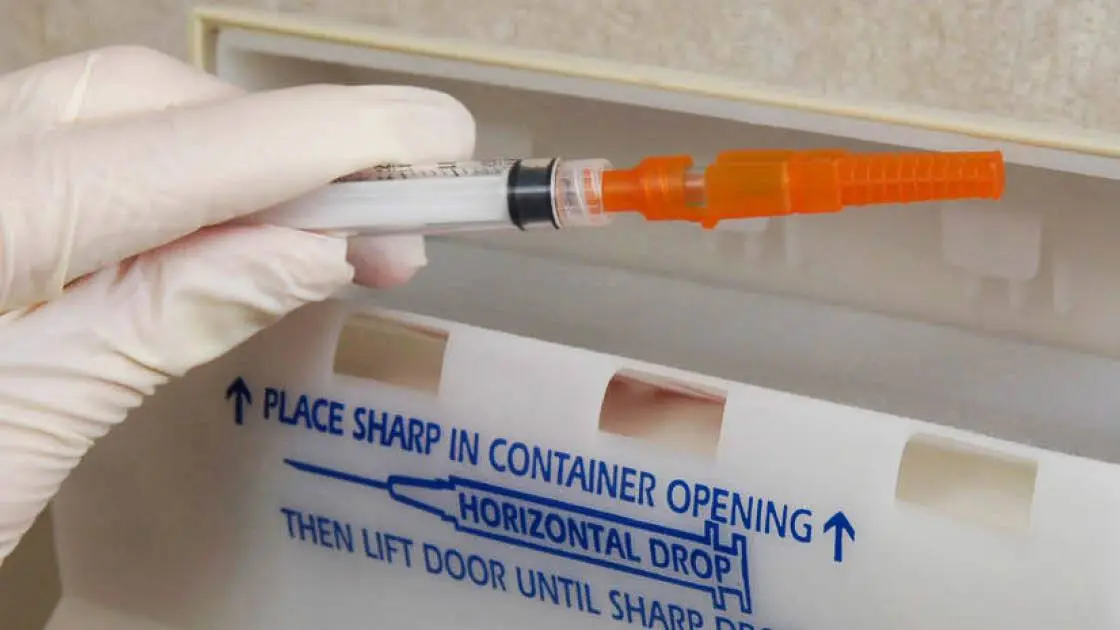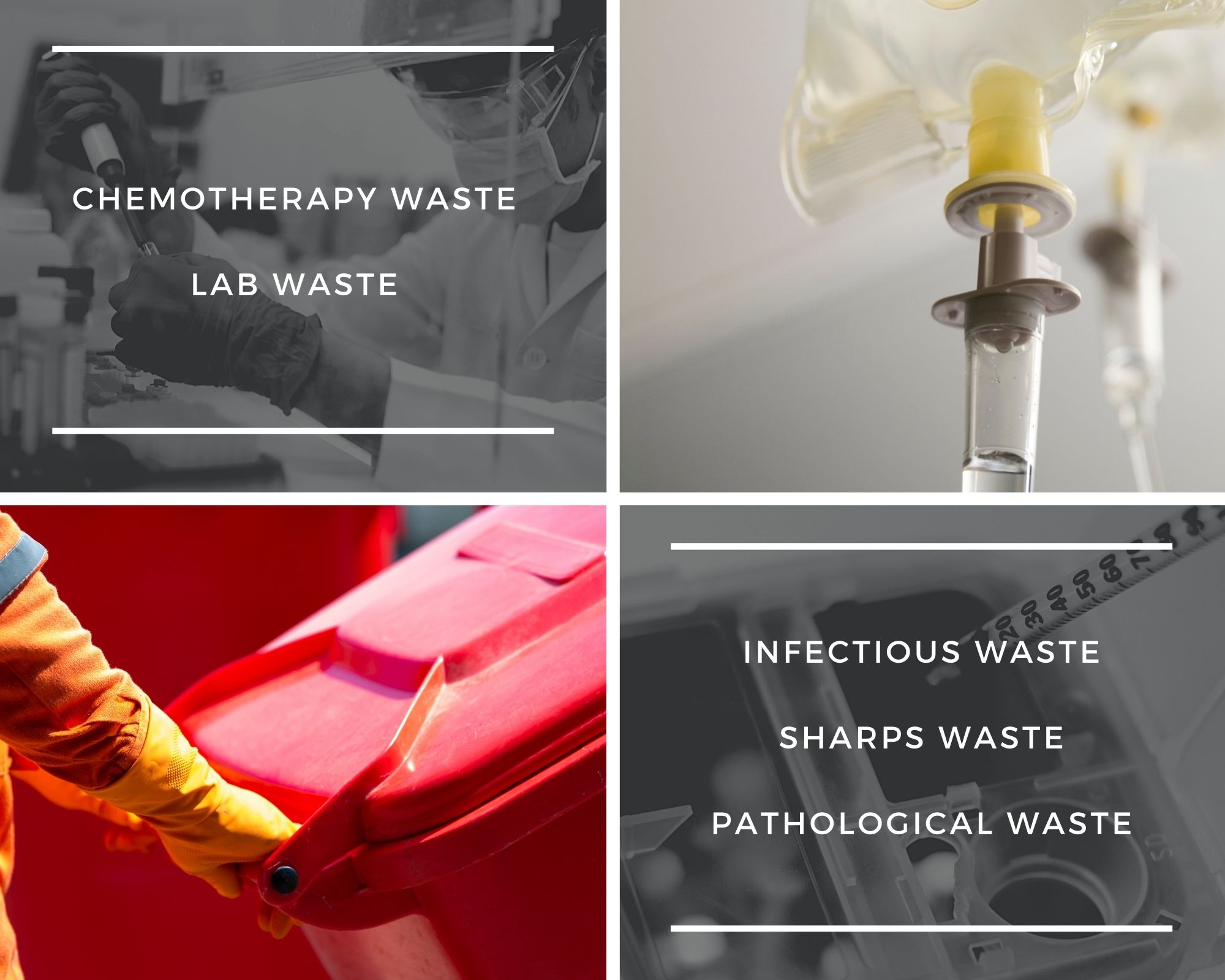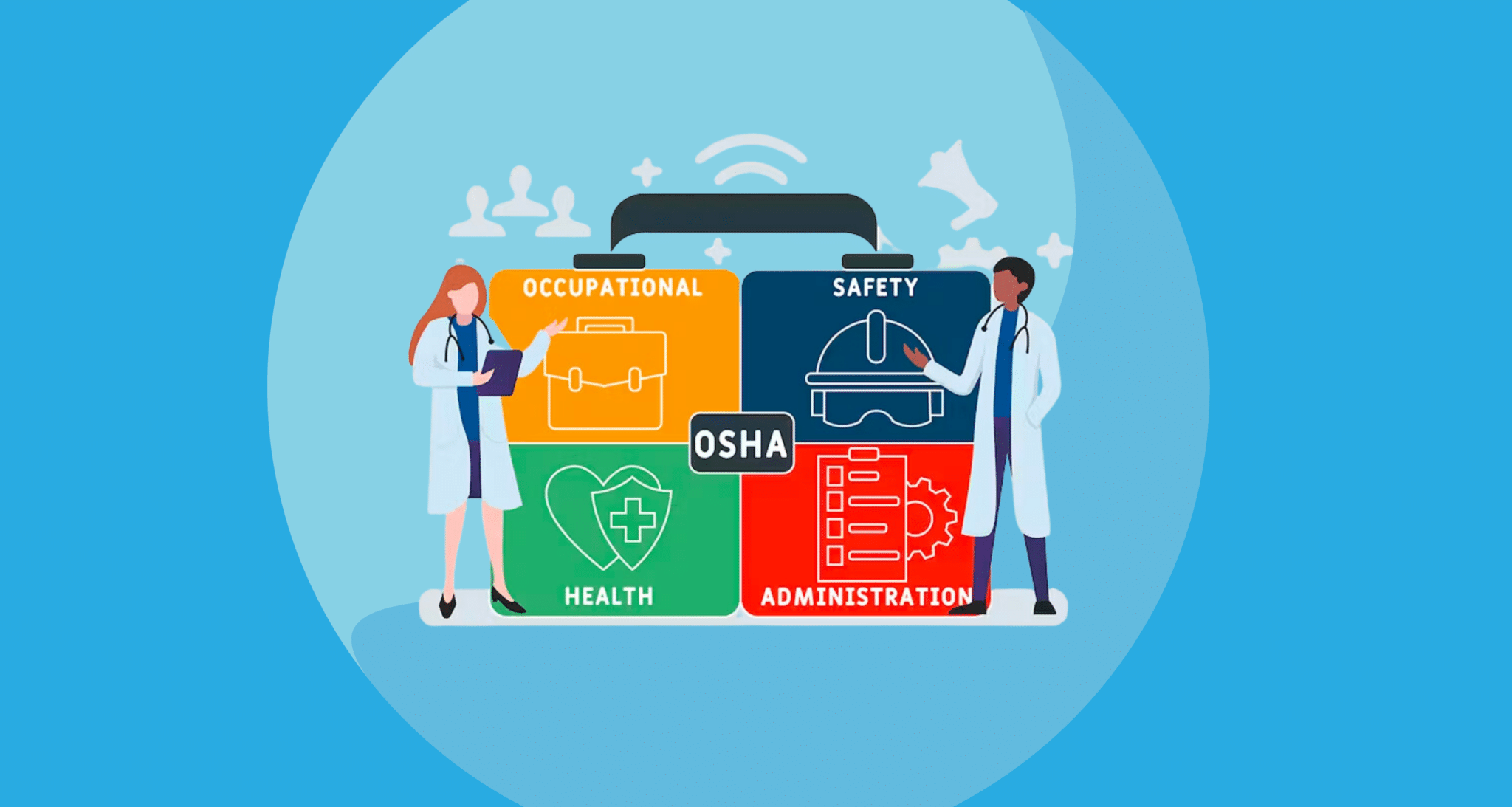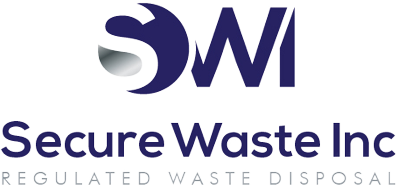What Are The OSHA Rules And Regulations For Regulated Medical Waste? Get The Answers Today From Secure Waste
In 1991, the Occupational Safety and Health Administration (OSHA) established the Occupational Exposure to Bloodborne Pathogens Standard, a vital regulation to safeguard approximately 5.6 million workers in healthcare and related fields.
This standard addresses the serious risks posed by exposure to bloodborne pathogens, notably the Human Immunodeficiency Virus (HIV) and the Hepatitis B Virus (HBV), which can lead to severe health consequences for affected individuals.
The Bloodborne Pathogens Standard encompasses a range of rigorous requirements designed to facilitate workplace safety and health. Among these is the mandatory development of an Exposure Control Plan, which outlines specific procedures and practices to minimize the risk of exposure.
This plan must be tailored to the unique hazards present within each facility and should include provisions for employee training, vaccination opportunities, and post-exposure evaluation and follow-up.
Additionally, the standard categorizes certain types of waste generated in healthcare settings as “regulated waste.” This classification is critical because regulated waste poses a significant risk for infection transmission.
Regulated waste includes blood and blood products and items contaminated with blood or other potentially infectious materials (OPIM), such as used sharps, surgical gloves, and dressings. Proper handling, storage, and disposal of regulated waste are essential to ensure that healthcare environments remain safe for workers and patients.
This section from Secure Waste provides a comprehensive summary of the OSHA Bloodborne Pathogens Standards, particularly about managing and disposing of regulated waste, to help organizations adhere to these critical safety protocols and safeguard public health.

What is an Exposure Control Plan?
An Exposure Control Plan is a comprehensive written document developed by employers to systematically outline the protective measures to eliminate or significantly reduce employee exposure to blood and other potentially infectious materials (OPIM). This plan serves as a crucial framework for maintaining a safe working environment, particularly in industries where the risk of exposure to such biohazards is prevalent.
At a minimum, the Exposure Control Plan must include the following essential elements:
- Exposure Determination: This section identifies specific job classifications and, where applicable, particular tasks and procedures that involve occupational exposure to blood and OPIM. This thorough determination helps assess risk levels associated with various positions within the organization.
- Incident Evaluation Procedures: The plan must detail procedures for investigating and evaluating the circumstances surrounding any exposure incident. This includes protocols for documenting the event, understanding the causes, and implementing corrective actions to prevent future occurrences.
- Implementation Schedule: A clear timeline outlining how and when other standard provisions will be executed is critical. This incorporates methods of compliance, effective communication of hazards to employees, and thorough recordkeeping practices to ensure accountability and continuous improvement.
By adhering to these components, employers can foster a culture of safety and heightened awareness regarding potential health risks in the workplace.

The term “regulated waste,” as defined by the Bloodborne Pathogens Standard, encompasses specific categories of waste that pose a potential risk of contamination. These include:
- Liquid or Semi-Liquid Blood: This category includes blood and other potentially infectious materials (OPIM) in liquid or semi-liquid forms, which can pose a significant health hazard.
- Contaminated Items: Any materials that have come into contact with blood or OPIM and have the potential to release these substances in liquid or semi-liquid forms if subjected to compression.
- Caked Materials: Items that are visibly caked with dried blood or OPIM and are capable of releasing these hazardous materials during handling, creating a risk of exposure.
- Sharps: This includes contaminated sharps, such as needles, scalpel blades, and glass, which can cause injuries and transmit infections.
- Pathological and Microbiological Waste: This category includes waste that contains blood or OPIM, such as contaminated organs, tissues, and cultures.
Employers must take an active role in identifying regulated waste. This assessment should not be based solely on the visible blood volume but on the potential for release of blood or OPIM, especially when waste is compacted in containers. Should an OSHA inspector identify sufficient evidence of regulated waste—either through direct observation (like liquids pooling at the bottom of a container or dried blood flaking off during handling) or via employee testimonies—there’s a risk of citations being issued.
OSHA has also provided further clarification regarding specific items. For instance, bandages that are not saturated to the extent that they would release blood or OPIM upon compression are generally not classified as regulated waste. Additionally, discarded feminine hygiene products typically do not meet the criteria established by the standard for regulated waste. Ultimately, the onus remains on the employer to make informed decisions regarding identifying and managing regulated waste.

OSHA And The Management of Sharps
Handling of Sharps Containers
The safe and effective management of sharps containers is essential in preventing injury and ensuring public health. Each sharps container must prominently display either the universally recognized biohazard symbol accompanied by the word “biohazard,” or be distinctly color-coded in red to denote its hazardous contents. These containers should always be maintained upright during use to prevent accidental spills and must be replaced regularly to avoid overfilling. Key practices for handling sharps containers include:
- Closure Protocol: Immediately secure the container before removal or replacement to mitigate the risk of spillage or exposure of contents during handling, storage, transport, or shipping.
- Secondary Containment: If leakage is possible, the container must be placed within a secondary, closable container specifically designed to contain all materials and prevent any leakage throughout handling, storage, transport, or shipping. This secondary container should also be appropriately labeled or color-coded to conform to established standards.
- Reusable Containers: Reusable sharps containers should remain sealed and must not be opened, emptied, or cleaned manually or by any means that could expose employees to the danger of percutaneous injury.
- Securing the Lid: After closure, duct tape can be used to secure the lid of a sharps container, provided that the tape does not substitute for the lid.
Location of Sharps Containers
To facilitate safe disposal practices, sharps containers must be positioned where they are easily accessible to employees, ideally near the areas where sharps are used, such as patient care stations.
In specialized environments such as correctional facilities and psychiatric units, logistical challenges may hinder the placement of sharps containers in immediate use areas. A mobile cart equipped with a locked sharps container is a beneficial alternative.
Purchasing Guidelines for Sharps Containers
Various materials, from cardboard to sturdy plastic, are available when selecting containers for sharps disposal. The key criteria are that any container must meet the definition of a sharps container—this includes being closable, puncture-resistant, leak-proof along the sides and bottom, and properly labeled or color-coded. As long as these specifications are met, the container will be considered acceptable by OSHA standards.
For further guidance on the appropriate selection, evaluation, and usage of sharps containers, refer to the NIOSH document titled “Selecting, Evaluating and Using Sharps Containers,” which offers detailed insights and best practices, including recommendations on proper placement illustrated in Figure 1 on page 12 of the document.

Lets make the process of disposing of sharp objects both safe and compliant with OSHA guidelines Understanding these regulations is key to protecting yourself and others from potential hazards Dive into the best practices for handling and disposing of sharps responsiblybecause safety should always come first
When it comes to disposing of regulated waste-
It’s important to follow state regulations to ensure safety and compliance. These regulations are typically outlined by your state’s environmental agencies or departments of health. You can check out the Regulated Medical Waste Locator for more guidance on Secure Waste.
Additionally, key OSHA guidelines are designed to protect workers handling regulated waste. It’s essential to ensure that regulated waste is placed in containers that:
- Can be securely closed.
- Are designed to contain all contents and prevent leakage during handling, storage, transport, or shipping.
- Are clearly labeled or color-coded as per the standards.
- Are sealed before removal to avoid any spillage or exposure during transit.
If the outside of the waste container is contaminated, it’s crucial to place it in a secondary container that meets these standards.
While OSHA doesn’t specify that healthcare facilities must treat waste before disposal, local regulations may apply. Always stay informed and proactive by referring to your state’s guidelines for the most accurate practices. Let’s work together to keep our environment safe and healthy!

Communication of Hazard to Employees
When Are Labels Required?
I want to point out that proper communication of potential hazards to employees is crucial, particularly in healthcare and laboratory settings. A warning label featuring the universally recognized biohazard symbol is mandatory on various items. Specifically, this label must be prominently displayed on bags and containers designated for regulated waste, bags containing contaminated laundry, and refrigerators and freezers for storing blood or Other Potentially Infectious Materials (OPIM). Additionally, any bags or containers meant for storing, disposing, transporting, or shipment of blood or OPIM, including specimen containers, must bear this warning. Furthermore, when contaminated equipment is set to be serviced or shipped, it must display a visible label featuring the biohazard symbol and the word “biohazard,” including detailed information on which parts of the equipment remain contaminated.
What Are the Required Colors for the Labels?
The labeling is a critical component of hazard communication, and the label colors play a significant role in visibility and understanding. Labels must have a fluorescent orange or orange-red background, ensuring they are predominantly this color. The symbols and text must be in a contrasting color to enhance visibility. The label should be an integral part of the container or securely affixed as close as possible via Just to let you know, a string, wire, adhesive, or other means to prevent loss or unintentional removal.
Can There Be Substitutes for the Labels?
Yes, indeed! Red bags or containers can effectively substitute for traditional biohazard labels for increased clarity and safety.
What Are the Exceptions to the Labeling Requirement?
While labeling is generally required, there are specific exceptions to consider:
- Regulated waste that has undergone decontamination is exempt from labeling requirements.
- Containers that hold blood, its components, or blood products and display FDA-required labels for transfusion or clinical uses do not need additional labeling.
- Individual containers of blood or OPIM placed in secondary labeled containers during storage, transport, shipment, or disposal are exempt.
- Specimen containers can forgo labels if the facility adheres to Universal Precautions, the containers are identifiable as holding specimens, and remain on-site *(see additional notes regarding specimen bags)*.
- Laundry bags or containers containing contaminated laundry may bear alternative labels or color coding, provided Universal Precautions are observed in handling all soiled laundry. Suppose contaminated laundry is dispatched off-site for cleaning to a facility that does not follow Universal Precautions. In that case, it must be contained in red bags or labeled adequately with the biohazard symbol.
Note on Specimen Bags: Some healthcare facilities utilize plastic bags to transport specimen containers from care areas to laboratories. These facilities often label these bags “biohazard” and treat them as infectious waste. If these transport bags are not contaminated, they are not categorized as contagious waste and can be disposed of as solid waste. Labels marked as “biohazard” carry the risk of solid waste haulers refusing to transport them due to concerns about infection.
OSHA does not mandate the use of biohazard-labeled plastic bags as secondary containment for internal transport of specimens, as per the exemption stated in 29 CFR 1910.1030 (d)(2)(xii)(A). This exemption applies to facilities operating under Universal Precautions as long as containers are readily identifiable as holding specimens and remain within the facility. Should specimens exit the facility, proper labeling or red color-coding is mandated. Moreover, secondary containers or bags are required only if the primary container shows contamination on its exterior.
Does OSHA Accept Department of Transportation’s (DOT) Labels for Waste and Specimens to be Shipped or Transported?
The labeling requirements set forth by OSHA are distinct and do not override the U.S. Postal Service labeling requirements or the Department of Transportation’s Hazardous Materials Regulations. DOT labeling is essential for specific transport containers that contain “known infectious substances.” However, it is not universally required for all items governed by the biohazard label under 29 CFR 1910.1030. When the OSHA-required label overlaps with the DOT-required label, adherence to DOT labeling is considered acceptable on the exterior of transport containers, provided that any internal containers still display the essential OSHA-mandated label. Containers serving as collection receptacles within a facility must bear the OSHA label, as DOT regulations do not cover them.
Which employees are required to undergo training?
All employees who might encounter occupational exposure to bloodborne pathogens must undergo initial and annual training sessions designed to equip them with essential knowledge and skills.
Should part-time and temporary employees be trained?
Part-time and temporary employees must also receive training, which must occur during company time to ensure they are well-informed and protected.
Who is responsible for training workers provided by personnel agencies (e.g., nurses) to other employers?
Under OSHA regulations, personnel providers that dispatch their employees to various workplaces are considered employers responsible for the welfare of their workers. While these personnel providers maintain a continuous relationship with their employees, the client employer controls the working conditions and associated hazards. Therefore, both parties are responsible for ensuring employee safety in the workplace. The primary duty of protecting workers from potential hazards lies with the client employer, yet the “lessor employer” (the personnel provider) also bears responsibility under the Occupational Safety and Health Act.
In the realm of OSHA’s Bloodborne Pathogens Standard, the personnel provider must deliver the general training required by the standard. At the same time, the client employer is tasked with providing training specific to the site and its unique risks. The contractual agreement between the personnel provider and the client must delineate the training responsibilities for both parties to ensure comprehensive compliance with all training requirements set forth by the standard.
What qualifications must a person possess to conduct employee training on bloodborne pathogens?
To lead training on bloodborne pathogens, an individual must thoroughly understand the subject matter encapsulated in the training program’s elements. They should be well-versed in how these topics correlate with the specific workplace environment they will address. The trainer is expected to demonstrate a high level of expertise regarding the occupational hazards associated with bloodborne pathogens.
Would you happen to know where to find resources for conducting training on the Bloodborne Pathogens Standard?
OSHA’s Office of Information and Consumer Affairs (OICA) has developed a range of helpful materials, including brochures, fact sheets, and instructional videotapes related to the standard. Interested parties can obtain single copies of the brochure and fact sheets by contacting OSHA Publications at 200 Constitution Avenue, NW, Room N3101, Washington, DC 20210, or by calling (202) 219-8148. The videotape is available through the National Audio Visual Center, with inquiries directed to (800)-553-6847. All resources provided by OICA should be viewed as complementary to an employer’s existing training programs. Additional materials can be sourced from local Area and Regional OSHA Offices, each supported by a Bloodborne Pathogens Coordinator to address compliance questions and provide guidance related to the standard.
Who are the potential trainers for the bloodborne pathogens standard?
Qualified health care professionals, such as infection control practitioners, nurse practitioners, and registered nurses, are candidates to conduct training on the bloodborne pathogens standard. Non-health care professionals, such as industrial hygienists, epidemiologists, or other specialized trainers, may also fulfill this role, provided they can demonstrate appropriate credentials and a robust background in bloodborne pathogens.
In Conclusion-
Now that you have a more comprehensive understanding of rules and regulations related to OSHA, don’t hesitate to contact Secure Waste.
We provide reliable, compliant, eco-friendly medical waste disposal solutions for your facility’s needs. We have expertise in biomedical, hazardous waste, and Sharps container disposal. In addition, we provide customized waste management plans, including secure collection and transport, and sustainable disposal practices.
Contact us today for a FREE Waste Assessment, or request a quote online!

Expert Medical Waste Management: With over 25 years of industry experience, Secure Waste is a trusted local leader in hazardous and biohazardous waste disposal across Maryland, Virginia, and Washington, D.C. Specializing in medical waste management, sharps needle disposal, and biohazard waste removal, the company ensures full compliance with federal, state, and local regulations while prioritizing environmental sustainability.
The company also offers additional services, including secure document shredding and sharps container sales, providing comprehensive solutions for healthcare facilities and businesses. Our cost-effective services help clients maintain regulatory compliance without unexpected costs.
With a commitment to customer satisfaction, Secure Waste offers tailored waste management plans that align with industry best practices. Their team of experts provides reliable, timely, and compliant services, making them the preferred choice for medical waste disposal. For a free waste quote or more information, visit www.securewaste.net






